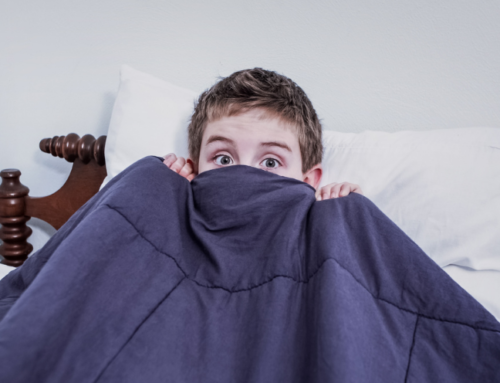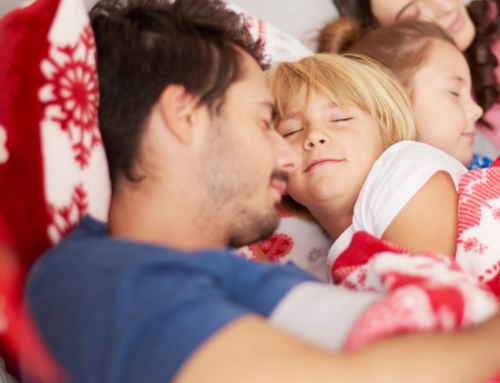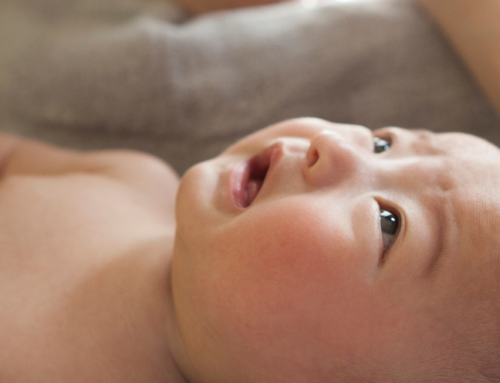Travelling with a baby or child? Here are some tips to help save your sleep!
⠀
As borders and countries open, more and more of us are travelling and many are travelling for the first time with little ones. Travelling at the best of times can be challenging. With babies and young children comes additional challenges. Here are some tips to navigate it while saving their sleep (and yours!).
Note – Use of the word ‘child’ throughout this post refers to both babies and children.
Air Travel Tips
Navigating airports and flying with little ones can be a testing experience for parents. It’s at these times that most parents discover they parent differently than they do at home. They may allow baby to nurse, bottle feed, or use a dummy as much as they want, especially during take off and landing. Anything to keep things calm! An added benefit of allowing feeds or dummy use is it can help prevent ear discomfort, especially on take offs and landings, caused by pressure changes.
Parents may also find it difficult to follow a sleep schedule. Some children take more sleep than they normally would at home. Travel brings lots of stimulation and if your child does sleep more than usual it may mean they need to rest from the stimulation through sleeping (or they could be bored!). For others, they’ll be excited and you’ll have trouble getting them to sleep. Do your best to follow your sleep schedule, but also be flexible. Where you can, plan your travel around your child’s sleep schedule, arriving at your destination at a time that would be the most beneficial for you all. For example, this may be arriving at bedtime or at afternoon nap time.
Entertaining children in the airport and on the flight can be challenging. Prior to travel consider how you will entertain your child. If they are not at the age where they may sleep for a fair amount of the flight, what can you bring to entertain them once the thrill of movies and screens loses their appeal. Books, sticker/activity/colouring books, small toys and playdough are some ideas to keep your child busy. Pack some new toys that they’ve never seen before. And don’t forget to go for walks, even while flying!
Finally, bring lots of snacks. When they get out of sorts a yummy snack can save the day.
For additional tips on flying with little ones, check out:
- this great article from mum and Jetstar cabin crew/manager Carrie Bo Lickass. She has lots of tips on carry bags, foods, toilet breaks, take-offs and landings and more.
- this article for parent’s tips on staying sane while travelling; and
- this article on how to help your child with ear pain on flights.
Download my free 14 page Travelling with Babies and Young Children guide. It provides tips for Sleep Success when travelling with babies and young children. It includes tips for jet lag, sleeping, feeding and a packing checklist.
Planning for travel and jet lag
A common issue when travelling distances across time zones is jet lag. Jet lag is a misalignment of the circadian rhythm. It occurs when the body’s internal biological clock is not in alignment to the time zone where you are travelling. Your and your child’s circadian rhythm is aligned with the day-night cycle (established by the sun) where you live. If you travel across time zones the day-night cycle occurs at different times than your body is used to. This can throw off your internal clock. You’ll feel tired and out-of-sorts (yet wide awake at your normal wake time at home) until your body clock aligns to the new day-light cycle.
Here’s some things you need to know:
- It takes time to adjust to the new time zone.
- Jet lag can impact your ability to care for your child and can affect their feeding and body functions such as gut elimination.
- Babies before three months of age don’t have a developed circadian rhythm and therefore don’t know day from night. Jet lag may not affect them much.
- For any baby/child over 3 months of age it is believed they adjust to a new time zone faster than adults do.
- Adjusting your body prior to travel can help to reduce jet lag. Even a partial adjustment can make a difference. However, what preparation looks like depends on your age, how long you are travelling for and how many time zones you cross.
- If you are travelling for a week or less, or crossing three or less time zones it might be better to keep yourself and your child on the same sleep, wake and eat schedule.
- If you are travelling for longer than a week, across more than three time zones or time zones are significantly different, you can prepare your and your child’s body (age dependent) for the change before you take flight.
Adult tips to prepare the body for jet lag
As an adult, several days before you leave you can begin to schedule your bedtime and meal times closer to your destination to help your body adjust and reduce symptoms of jet lag. Even a partial adjustment before you leave can help. On arriving at your final destination follow your new schedule. Don’t go to bed until it is bedtime in the current time zone. Avoid napping after arrival too.
I haven’t tried it but I know many people like the Timeshifter app. It gives you a customised schedule to follow as you travel to help reduce jet lag. It can help you too to time your light exposure, among other things.
Infant/Children tips to prepare the body for jet lag
For infants and children you have two options.
Option 1
Shift bedtime and naps by fifteen minutes a day for one to two weeks before travelling to bring them closer to that of your final destination. Babies 3 months and under will unlikely need this option as they do not have a developed circadian rhythm, therefore travel across time zones may not affect them much.
Option 2
Use sunlight to your advantage and instead of shifting your child’s schedule gradually prior to travelling, adjust them on the first full day at your destination. Get them up at a reasonable wake time and immediately expose them to bright natural sunlight. They may be tired, and potentially a little grumpy, but they will adjust quickly.
For babies 3 months and under it is helpful to expose them to daylight in the day and darkness at night to promote development of the circadian rhythm, so while travelling they can join the rest of the family in natural sunlight exposure on waking.
Hydration
Staying hydrated while travelling can help to reduce the tiredness and fatigue when at the final destination. Aeroplane travel, along with alcohol and caffeine (which can also disrupt sleep), increases the risk of dehydration. Drinking lots of water throughout the flight can help reduce the symptoms of jet lag. If breastfeeding it will be particularly important to stay hydrated.
Help your body adjust quickly at a new destination
Use the sun to help you and your family adjust to your new time zone quickly. Light exposure in the morning (preferably on waking or before 10am, for at least 15 minutes) can help you adjust to an earlier time zone quicker. Light exposure in the evening can help you adjust to a later than usual time zone.
However, if you travel more than eight time zones from home, it can be hard for your brain to distinguish between morning and evening light. Therefore the timing of exposure is important. So if you have travelled more than eight time zones:
- If you need to wake up earlier in your new destination, get outside into the morning sunlight on waking and spend at least 15 minutes in it. Avoid the sunlight in the few hours before dark, just for a few days until your body has adjusted to local time.
- If you need to wake up later in the morning at your new destination, expose yourself to late afternoon sunlight for the first few days. This might mean you need to wear sunglasses in the morning for a few days to avoid the bright light, just until your body has adjusted to local time.
- Once your body has adjusted to the new time, exposure to morning sunlight (on waking or before 10am, for at least 15 minutes) is important to establish a healthy sleep rhythm.
Planning to sleep safely
Try to have your child sleep in the same sleep environment as at home. If they are in their own sleep space, try to keep them in their own sleep space when travelling. If they are co-sleeping, continue co-sleeping safely if you wish.
As you do at home, continue to sleep them safely while travelling. If renting a crib or travel cot (port-a-cot) make sure it meets the safety standards of your home country.
Keep where they sleep away from hanging cords or anything that could fall or tip over. Make sure there is nothing nearby that they could reach for and pull onto themselves. A bed against a wall may be an entrapment risk.
Keep heaters and electrical appliances away from their sleep space. Also, don’t use an electric blanket, hot water bottle or wheat pack for babies. Check for other safety hazards too. For example, pillows (if not appropriate for their age), heavy duvets, the height of the bed for younger children, a soft mattress or waterbed. If your child is sleeping in a bed on their own, what are the risks if they were to roll off the bed? We can’t always control our sleep space when travelling, however safe sleep is important. At each new place you go to, take a look around and do your best to minimise risks while sleeping.
Red Nose Australia’s Safe 6 key steps to reduce the risk of SIDS are:
a. Always place baby on their back to sleep
b. Keep babies face and head uncovered
c. Keep baby smoke free before and after birth
d. Safe sleeping environment night and day
e. Sleep baby in a safe cot in parents’ room for the first 6-12 months
f. Breastfeed baby, if able to.
These steps are outlined in the Safe Sleeping Guide for Parents which can be downloaded and read prior to your travel.
If co-sleeping, Red Nose Australia’s Safer Co-Sleeping Guide for Parents can be downloaded and read.
Sleep environment
Bring as much of their sleep environment with you as you can. For example you might consider bringing the white noise machine, sheets that smell like home, lovey, toys, pillow or blanket, sleep suit or sack etc. Adding a little bit of home to the new sleep environment will help them to feel safe and secure.
If you are bringing a travel cot it can help to have your baby sleep in it at home a few nights before travel. If you have the option to rent a crib, check it meets safety standards. Most children prefer a crib over the travel cot as its mattress is not overly comfortable. Some travel cots have extra mattress pads though that may make it more comfortable for them.
If you are renting a cot/crib let them spend some time in it before sleep, to explore, play and get comfortable in the new space.
Keep the nights dark. Dark nights help the body shift faster into sleep. Check for and cover any lights from electronic devices. Bring blu tack with you as a quick easy way to cover those pesky electronic lights. You can bring portable blackout sheets or blinds to darken the windows at night. Alternatively, use any available sheet and blanket to cover the window/s and get creative with hangers with clips. Or pack a few trusty clothes pegs in case you need them. A few rubber bands can also come in handy too for securing a sheet or blanket to blinds to block light!
First Night Effect
Did you know that dolphins and some other sea animals sleep with one hemisphere of the brain asleep while the other is awake? This is known as unilateral hemispheric sleep and is thought to be a protective mechanism allowing the animals to stay alert for predators while sleeping. So why am I bringing up this interesting fact here? Because it has been found humans can also have one hemisphere of the brain more vigilant than the other when asleep. Have you found that you have trouble sleeping in a new environment on the first night? This is known as the first-night effect. Researchers have shown this effect is due to one hemisphere of our brain remaining vigilant to monitor unfamiliar surroundings while we sleep. Essentially, part of the brain is on night watch to protect us as we sleep!
Research into this effect is limited and needs further investigation. However, it is important to keep it in mind as it is likely you and your child may have difficulty getting quality sleep for a night or two when in a new environment. It’s important to know that this is normal, and sleep quality will improve once everyone is more comfortable in the new sleep environment.
Remember – No matter how different the sleep space is, you are there. You are their safe space. If you are there providing lots of love and comfort they’ll be more easily able to sleep in a new environment.
Healthy Sleep Habits
Prior to undertaking travel, maintain healthy sleep habits and continue these while you travel. This includes
- Establishing a wind-down routine for you and your child, and following this both at home and while abroad
- Having each member of the family going to bed at the best time for them to ensure they are getting sufficient sleep
- Avoiding screens at least an hour before bed, or using blue light blocking glasses.
If you or your child are having difficulty sleeping when arriving at your destination, in addition to tips throughout this post, you can try relaxation techniques. Depending on their age, do breathing exercises together, or listen to some music. A great wind down piece of music for kids is The Flop Game. For infants try something like the Brahms Lullaby or their white noise machine or an app. You could also try the book that helps promote relaxation ‘The rabbit who wants to fall asleep’. More information on this book can be found under my book reviews here.
Naps and bedtime for your baby or child
When travelling your baby or child won’t be sleeping in their regular sleep environment. You may not be able to control the lighting too for naps. Remember:
- It’s ok to use the carrier and stroller for naps. Naps on the go are still a nap!
- If it is difficult to arrange naps in darkness that is ok. It’s better for your baby/child that naps are in natural light rather than darkness. If they nap in darkness it will only confuse the body’s internal clock even more and make it harder for them to adjust to the new time zone.
- It’s ok if the schedule goes out the window. Trust in nature, that your child will take the sleep they need, when they need it. Follow their cues and if necessary adjust bedtimes accordingly.
- It’s ok to nurse them to sleep if that works for you all. It won’t create any bad habits.
- The new environment may be exciting and stimulating. They may need help to move from an excited state to a restful state. Motion, such as strollers, are good for this, along with incorporating some down time into your busy day. They may also need more parent assistance than normal.
- Use natural sunlight and fresh air to your advantage. Get outside where possible. This will aid a better night sleep.
When we travel there are many things that are outside of our control – like flight cancellations, hotel booking issues, interesting sights to see that are only open at specific times etc. It’s ok if nap times and bedtimes aren’t to the normal schedule you follow at home. Do your best to keep to a suitable schedule and follow your child’s sleepy cues. Also be kind to yourself and your child if things don’t go according to plan. If following the schedule becomes difficult, focus instead on trying to keep a reasonably consistent wake time followed by morning light exposure to aid the body in setting its own rhythm for the day.
Feeding while travelling
Try to keep your baby on the same number of feeds as you would at home, or more, but not less as this will affect your supply. Feeding can help them dial down, so they may want to feed more than usual. Traveling can cause changes in your child’s digestion- so don’t be surprised if they are feeding differently and have less or more frequent poops.
Prior to travelling it can be helpful to check your destinations rules around breastfeeding in public before you go. It can also be helpful to practice nursing positions in the car, a coffee shop etc beforehand. While travelling dress for the easiest and quickest feeds.
If pumping or formula feeding consider what supplies you need to pack, storage requirements, and any transport rules (for example airline rules). Check that the formula you need is readily available in the countries you will travel to.
If your child is eating solids, try not to change their diet up too much. As best you can, keep them on the foods they are used to. If travelling by air, find out any regulations if bringing canned, jarred or processed baby food. Healthy snacks and drinks can help your older baby or child enjoy their travel time.
Go with the flow
No matter how well prepared you are or how much travelling experience you have, travelling can be overwhelming for your child and there will likely be challenges. Children are sponges that pick up on our emotions, so they will feel any stress and tension we have around travelling or about naps and bedtimes not going according to plan. Try to remember that whatever happens, their bodies will take the sleep they need. Some days it might not feel like it, but they’ll be ok. This is but a moment in time – cherish and enjoy the travelling memories and when you get home, sleep can be righted.






Leave A Comment